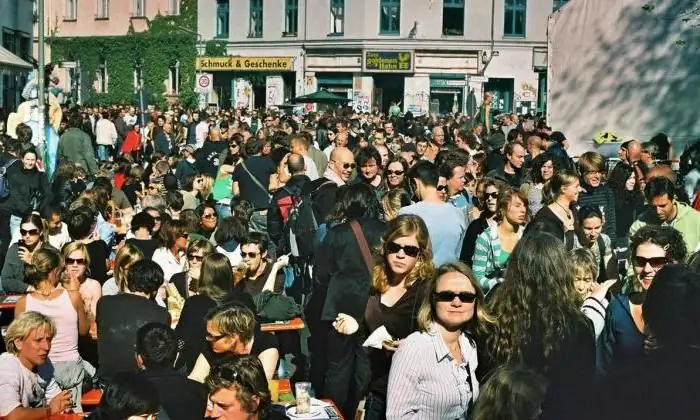- Author Henry Conors [email protected].
- Public 2024-02-12 02:54.
- Last modified 2025-01-23 09:07.
A small Ukrainian town has become widely known in the post-Soviet space due to its labor achievements. For more than 100 years, the population of Gorlovka has mainly worked in coal mines and in industries related to servicing coal mining. Now the city (according to Ukrainian terminology) belongs to ORDLO (Separate districts of Donetsk and Lugansk regions) and is controlled by the unrecognized Donetsk People's Republic.
General information
The city is located in the north-eastern part of the Donetsk region, at a distance of 50 km from the regional center. It is located on a hill (western spurs of the Donetsk Ridge). The total area of the territory is 422 km2. 29 rivers of the Azov Sea basin flow through the settlement. Here is the main coal basin of Ukraine and Eastern Europe.

Now a line runs along the outskirts of the city, separating the opposing forces onDonbass.
And this settlement was founded in 1867, originally it was the village of Korsun, in 1869 it received its modern name.
The village was named in honor of Pyotr Nikolaevich Gorlov, a mining engineer who equipped the first mines in the region. Gorlovka officially received the status of a city only in 1932. The official population of Gorlovka is about 260 thousand people (as of 2018). However, in fact, much fewer people live here, according to some estimates, about 150-180 thousand people live permanently in the city.
Foundation

The first known settlements on the territory of modern Gorlovka appeared in the 17th century. Then, on the banks of local rivers, farms of Zaporizhzhya Cossacks and runaway peasants were built. In 1795, 6,514 people lived in two villages - Gosudarev Bayrak and Zaitsevo (now they are located within the city). At the beginning of the 19th century, several new settlements were formed, which were settled mainly by peasants from the Kharkov region. At the same time, the first coal deposits were discovered in the region, and the local population began to develop them in an artisanal way.
Only after the start of construction of the railway and the opening of the railway station, the village of Korsun officially appeared here, later renamed Gorlovka. At the same time, the industrial development of coal deposits began, two mines were built, equipped under the leadership of Petr Nikolaevich Gorlov. In subsequent years, mining began at the anthracite deposit, discovered in 1889.year.
Better times

In the Soviet years, an increase in coal production began rapidly, the city was built up and expanded. In 1939, the population of Gorlovka was 181 thousand people. In subsequent years, the Soviet authorities built or enlarged nine mines, several machine-building enterprises and the largest chemical enterprise in Ukraine, Severodonetsk Azot Association, now it is the Stirol concern.
In the post-Soviet era, most mines were closed, as were many industrial enterprises. In 2001, the population of Gorlovka was 289,872 people. In subsequent years, the number of residents of the city declined due to migration outflow, from 1989 to 2013 the decrease was as much as 16%.
In recent years

The population of Gorlovka (Donetsk region) 2-3 years ago was about 267,000 inhabitants. As of April 1 of the current year, 263,214 people lived in the city (according to the data of the GlavStat of the DPR). However, in fact, much less lives here, as evidenced by half-empty streets and abandoned houses. According to some estimates, with the outbreak of hostilities and the loss of control over this settlement by Ukraine, about 30% of local residents left it.
People left for other cities of Ukraine and Russia in order to find a permanent place of residence. Due to the lack of jobs and low wages, many residents of Gorlovka left to work abroad, where they now live most of the time. Now the population of the city of Gorlovkais about 150-180 thousand people.
The birth rate in the city has also significantly decreased - in the first quarter of 2018, only 245 children were born. In previous years in Gorlovka, on average, 45 newborns were registered per week (now - 17). Mortality rates have changed little in recent years. In addition, the trend of recent decades has continued, when young people leave to study or earn money and do not return home, so the population is not only decreasing, but also aging. Accurate statistics on how many residents left the city have not been found.






